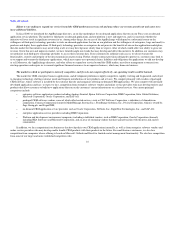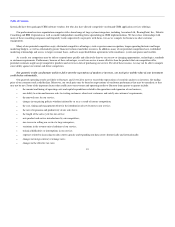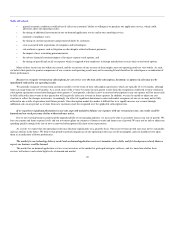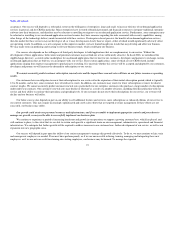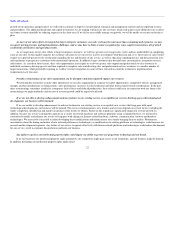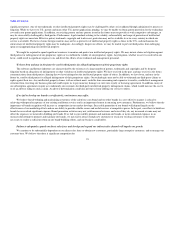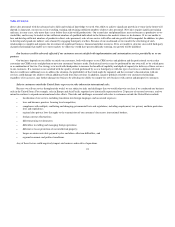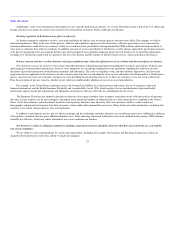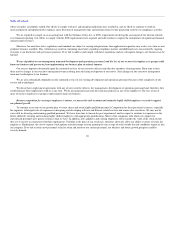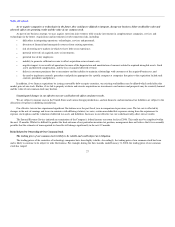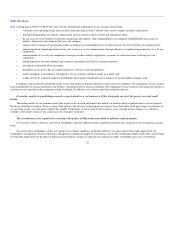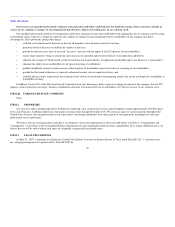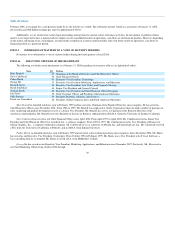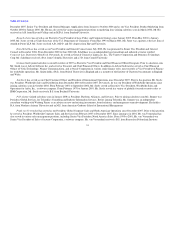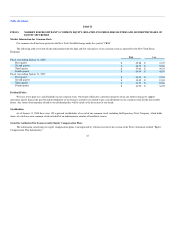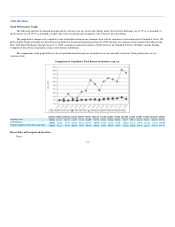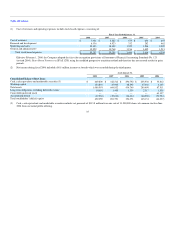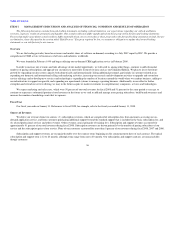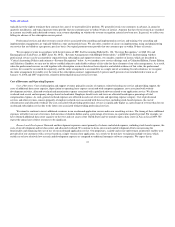Salesforce.com 2007 Annual Report Download - page 31
Download and view the complete annual report
Please find page 31 of the 2007 Salesforce.com annual report below. You can navigate through the pages in the report by either clicking on the pages listed below, or by using the keyword search tool below to find specific information within the annual report.
Table of Contents
from a closing price of $48.53 to $64.99 per share. Factors affecting the trading price of our common stock include:
• variations in our operating results and cash flows from operating activities and how those results compare to analyst expectations;
• forward looking guidance to industry and financial analysts related to future revenue and earnings per share;
• the net increases in the number of customers and paying subscriptions, either independently or as compared with published expectations of
industry, financial or other analysts that cover our company;
• changes in the estimates of our operating results or changes in recommendations by securities analysts that elect to follow our common stock;
• announcements of technological innovations, new services or service enhancements, strategic alliances or significant agreements by us or by our
competitors;
• announcements by us or by our competitors of mergers or other strategic acquisitions, or rumors of such transactions involving us or our
competitors;
• announcements of customer additions and customer cancellations or delays in customer purchases;
• recruitment or departure of key personnel;
• disruptions in our service due to computer hardware, software or network problems;
• market conditions in our industry, the industries of our customers and the economy as a whole; and
• trading activity by a limited number of stockholders who together beneficially own a majority of our outstanding common stock.
In addition, if the market for technology stocks or the stock market in general experiences uneven investor confidence, the trading price of our common
stock could decline for reasons unrelated to our business, operating results or financial condition. The trading price of our common stock might also decline in
reaction to events that affect other companies within, or outside, our industry even if these events do not directly affect us.
If securities analysts stop publishing research or reports about us or our business or if they downgrade our stock, the price of our stock could
decline.
The trading market for our common stock relies in part on the research and reports that industry or financial analysts publish about us or our business.
We do not control these analysts. If one or more of the analysts who do cover us downgrade our stock or lower their future stock price targets or estimates of
our operating results, our stock price could decline rapidly. Furthermore, if one or more of these analysts cease coverage of our company, we could lose
visibility in the market, which in turn could cause our stock price to decline.
The concentration of our capital stock ownership with insiders will likely limit your ability to influence corporate matters.
Our executive officers, directors, and several stockholders and their affiliated entities together beneficially own a majority of our outstanding common
stock.
As a result, these stockholders, if they act together or in a block, could have significant influence over most matters that require approval by our
stockholders, including the election of directors and approval of significant corporate transactions, even if other stockholders oppose them. This concentration
of ownership might also have the effect of delaying or preventing a change of control of our company that other stockholders may view as beneficial.
28


